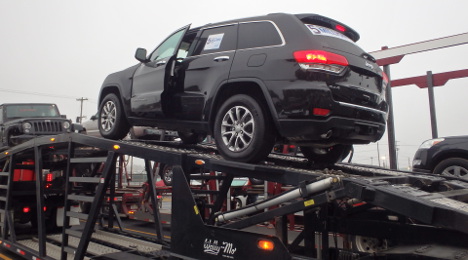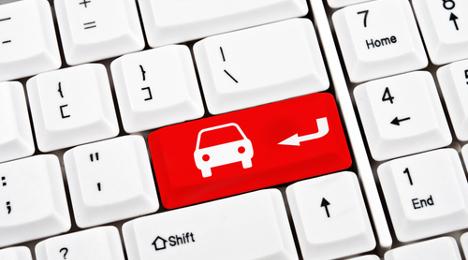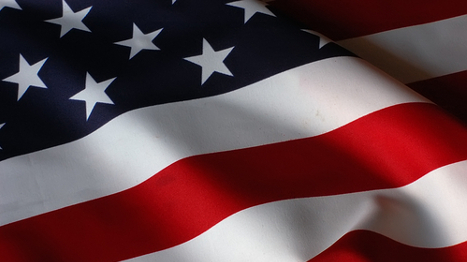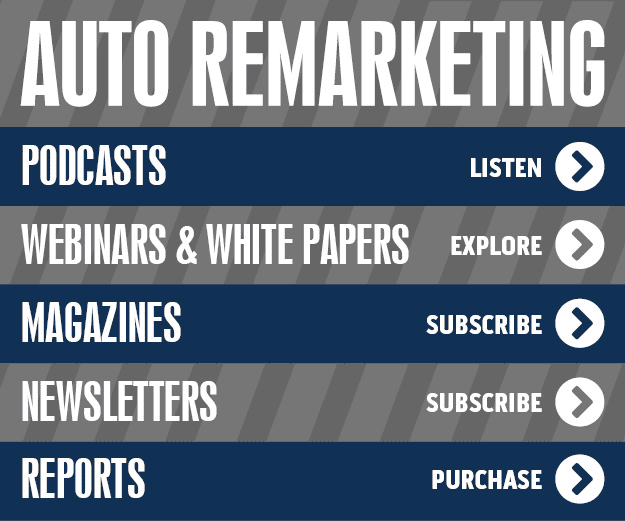Auto Remarketing has learned that the Cox Automotive Software Division will be led by Mark O’Neil, the longtime chief executive officer of Dealertrack Technologies.
O’Neil will report to Cox Automotive president Sandy Schwartz. O’Neil’s position will cover Dealertrack and the former Cox Automotive Software Division.
O’Neil joined the Dealertrack board of directors and became CEO and president in August 2001, according to his bio on the Cox Automotive website. Beginning in May 2005, his title became CEO.
In addition to experience in other industries, O’Neil’s background in the car business includes time as president of Pennsylvania-based dealer group Ertley MotorWorld in the late 1980s. He was also a co-founder of CarMax.
His auto background also includes time with auto sales website Greenlight.com, where he was president and chief operating office from June 2000 through January 2001. O’Neil is also currently a director at DealerTire.
This news follows a series of executive appointments amid Cox Automotive finalizing its purchase of Dealertrack earlier this month.
On Oct. 8, Cox Automotive appointed Brian Geitner as president of financial services and NextGear Capital.
Geitner, who was already president of NextGear, received these expanded duties as Patrick Brennan, who had been group vice president of finance services, became Cox Automotive’s senior vice president of operations and chief integration officer for the recent Dealertrack purchase.
Meanwhile, on Oct. 6, the company named Raj Sundaram chief client success officer. Sundaram had served as co-president at Dealertrack.
A couple weeks before the Dealertrack purchase was finalized, Cox Automotive announced that it brought the Kelley Blue Book and Autotrader properties under one leadership structure headed up by Jared Rowe, who is now president of Cox Automotive Media Division.
Staff Writer Nick Zulovich contributed to this story.
Selectbidder, a Canadian auto tech company best known for its auction-centric dealer trade networking platform for trade-in vehicles, launched its product in the United States market last month and officially announced its first American auction partner on Tuesday.
Eighteen-hundred miles away from Selectbidder’s Moncton, New Brunswick home is Melbourne, Fla.-based Space Coast Auto Auction, who will utilize the Selectbidder platform to orchestrate real-time bids for its network of dealers handling trade-ins.
How exactly does it work? To put it simply, the Selectbidder platform takes an auction’s already established network of dealers and connects those with recent or pending trade-ins to other dealers interested in buying them.
Joe Pritchett, Space Coast’s chief executive officer, explains his reaction to the solution, which was recently demonstrated for him at the 2015 NAAA Convention in Orlando, Fla.
“Once we saw how Selectbidder puts our auction into the trade-in process, I knew we needed to start using it,” Pritchett said. “With Selectbidder, our selling dealers are going to deal with us at the point of trade, allowing us to sell more cars straight from their lots. Our dealers and their customers are going to love how quickly and easily they get live offers on their Trade-ins. For our dealer buyers, it’s going to allow them to tap into fresher vehicles earlier in the remarketing process.”
Basing the system around what Selectbidder considers the “original dealer network” – the auction – the company aims to increase transparency for everyone involved, including the customer, who can see for themselves how much the dealer will receive for the trade-in vehicle at the next step in the sale cycle.
In a previous interview with Auto Remarketing, Selectbidder chief executive officer Sean Liptay said he hopes this is just the beginning of his tech-company’s growth in the U.S.
“The beauty of the product is that it can be up and running within a week in any location in North America, based around surrounding independent auctions,” Liptay said. “So it doesn’t matter if it’s the local auction in Florida versus the local auction in Louisiana, they can be up and running because they already have the relationship network built.”
Interested in reading more about Selectbidder and other companies making noise in the auction industry? Stay tuned for our Oct. 15 issue of Auto Remarketing, both in print and online, where we delve further into the topics of digital trends, tools and strategies for the wholesale market.
Editor Joe Overby contributed to the reporting for this story.
SmartAuction has sold its 5 millionth vehicle.
Ally Financial announced today that its online auction platform held a special auction for the milestone vehicle, which was purchased by Classic Chevrolet of Grapevine, Texas.
The winning bid was approximately $180,000, and Ally will divide that sum and donate it to 10 charities in the Dallas area selected by the dealership. The consignor on the car was Ally, and the vehicle itself is a 2014 Jeep Grand Cherokee Laredo.
The 5 millionth car sold via SmartAuction comes 15 years after the launch of the platform, which averages 22,500 listings, nearly 1,200 makes and models, and more than 8,000 buyers and sellers each day.
One of the more recent landmarks for SmartAuction — which is the presenting sponsor of the National Remarketing Conference at Used Car Week — was the launch of its iPhone and Android app in 2013. There are an average of 22,500 monthly log-ins for the app, which has seen its usage double in the last year.
“The key to our success has been utilizing feedback from our dealership community and leveraging our relationships with independent auctions, rental and fleet companies, and other vehicle consignors to create the best experience online,” said Steve Kapusta, vice president of dealership online services and remarketing at Ally.
“As buyers and sellers have grown more comfortable with online auctions, we’ve been able to grow the platform, expanding the virtual inventory of vehicles and incorporating new technology and tools that make purchase and sale transactions easier and faster every day,” Kapusta said.
He added: “Reaching five million sales on SmartAuction is a testament to the performance of the platform over the years, and its ability to generate value for buyers and sellers around the country. Ally is proud to have strong and trusted relationships with dealers and SmartAuction is just one of the many leading products and services that we offer to help them succeed.”
There will be a celebration on Nov. 16 in Grapevine, where the aforementioned donations will be presented on behalf of Classic Chevrolet to the following organizations:
6 Stones Mission Network
Christ’s Haven for Children,
The Angel Fund of Trinity High School
RISE Adventures
Grapevine Relief and Community Exchange
Food for the Soul
VAST (Valuable After School Time)
Christian Community Storehouse of Kelleher
North Texas SNAP
Neuro Fitness.
“Ally’s SmartAuction platform is an important tool for us when buying and selling inventory, so we are pleased to be part of this milestone for SmartAuction,” said Tom Durant, owner of Classic Chevrolet. “We are also incredibly proud that the funds from this auction will help many organizations in our community that make a difference in so many lives — something the team at Classic Chevrolet is honored to support.”
DealersLink released the newest iteration of its live online auction platform, AuctionLink 1.4, on Tuesday, highlighting the solution’s features that culminate in what the company claims is the one of the “most convenient, efficient and easy to use” online auction platforms.
As listed by the company, the key features of AuctionLink include:
- Access to upstream vehicles that never go to traditional auctions
- No buy or sell fees ever
- Clean, low miles vehicles run first
- Condition reports on all units
- Reserve prices guaranteed below wholesale book
- Last second bids reset the clock for 10 seconds
- Automated preset bidding – set it and forget it
The company aims for the platform to appeal to those familiar with the features of traditional brick and mortar auctions.
“We pioneered the first dealer direct platform in 2005,” said Mike Goicoechea, DealersLink’s chief executive officer. “Now we are excited to host the most efficient and robust online auction platform.”
Available only to DealersLink members, AuctionLink runs on the DealersLink website every Tuesday afternoon.
There is a lot of buzz out there that many companies, including the auction giants with their subsidiaries, are looking at ways to “go around” auctions and lower prices to almost ludicrous value levels.
The true buzz should not be discussing “going around” today’s technologically enhanced auctions, but rather seeing them as the core around which mobile technologies branch out to create value in the remarketing of today’s diverse portfolios.
“Going around” technology is simple when you are selling “cookie-cutter” low-mileage off-lease or RAC units that are easily integrated into Auto Grade and other evaluation methods, but not as effective in remarketing today’s average 11-year-old on the road trade. And at some point when the volume of off-lease and RAC turn-ins goes viral, the “going around” methods lose the ability to handle short-term high volumes, and that is a key variable in the traditional brick-and-mortar auction process.
One thing that continually amazes me is that with all these competitive challenges we see, it’s assumed that their technologies are non-existent, at or superior to those currently being used by NAAA member auctions.
The hubris in that contention can clearly be discarded by some simple examples, even from a small independent auction like mine.
— All lanes 100 percent simulcasted.
— All vehicles have condition reports and multiple images and some have video presentations.
— Carfax and Mexico Ready information are tied into the fabric of the run lists to maximize the two items listed above.
— Everything is available on our websites and everything is scaled to any mobile device, including Simulcast.
So, the products that compete with us are just part of the fabric of who we are. And the niche products narrow the focus of the buyers as they assume that all buyers will go online to purchase every year, make, model and mileage vehicle, which is far from reality and thus narrows their bidder/buyer base.
What these companies are selling are low price, not great service or maximum value for the products they try to remarket.
What I enjoy and know is that my partnerships with companies like WTG and The Web Guys, has allowed us to create mobile tools both in our website and in our app that creates a seamless integration with our consigning partners and makes us multi-dimensional, and thus not a one-venue-focused remarketing company.
Better to be online and in-lane and widen the base of consigners exposure while you still avail yourself of fixed platforms like SmartAuction, then narrow your model to the narrowest possible exposure.
As I said, mobile + auctions = remarketing success. Mobile only = limited exposure and lowered returns, but I guess you get what you pay for.
Editor's Note: This column was written in April. Jim DesRochers is vice president at Dealers Auto Auction of the Southwest. As with any contributed content, the opinions expressed in this and other editorial columns are solely that of the author's and do not necessarily reflect those of Auto Remarketing or its parent company.
Along with announcing a case study on the benefits of OVE.com, Manheim also reported a collection of enhancements to the product, which aim to “refine” customers’ performance and digital experience.
First up, the company revealed seller ratings on the site now aggregate data from a trio of sources, a move Manheim explained will “give buyers the trust and confidence in purchasing from many sellers.”
Also, the site touts new centralized processes, which the company explained can allow for a more thorough capture and quicker position of no-sale inventory.
Lastly, Manheim announced a new integration with inventory risk management company DealShield. The tool has been integrated into OVE.com, giving buyers a quote by vehicle at checkout.
The move also can help users better manage the sale of returned vehicle purchases through the buy-back guarantee program quickly and more efficiently, Manheim management explained.
“Dealers using OVE.com add another buying and selling avenue to their business portfolio that clearly helps increase sales and profits,” said Jenifer Eggert, vice president of digital services for Manheim. “As our customers continue to embrace online channels to move inventory, we continually strive to strengthen our core online tools and processes in an effort to perfect customers’ digital experience.”
Auto Remarketing also took a look at the key findings from the newly released OVE.com case study, and picked out four takeaways, the first being an increase in percentage of MMR price for vehicles that are re-run through OVE instead of the physical auction.
It is late summer 1995 in New York.
Meeting in the singles finals of the U.S Open tennis tournament are, arguably, some of the generation’s greatest stars: Pete Sampras beating Andre Agassi in the men’s final, Steffi Graf defeating Monica Seles in the women’s.
What, you might ask, does that have to do with remarketing?
Nothing, other than this:
Some of the satellite trucks at that tournament would end up, weeks later and some 200-plus miles to the northwest, playing a pivotal role in what is described by at least one account as being the first car ever sold via simulcast.
The sale happened on Oct. 12, 1995 at State Line Auto Auction in Waverly, N.Y.
According to a retelling of events shared by ServNet, of which State Line is a member, the first vehicle sold to a remote bidder in conjunction with a live sale occurred that day, with the car going to Farnsworth Chevrolet in Canandaigua, N.Y.
In 2014, nearly two decades after this event, 17.9 percent of auction sales were Internet-based, according to the 2014 NAAA Annual Review, included in NIADA’s Used Car Industry Report. Simulcast alone had a 13.8-percent share.
Online-only and simulcast sales have come a long way, to where it’s one of the focal points of auction industry discussion and training, stirring up discussion at events like one hosted this summer, nearly 20 years after State Line’s simulcast sale.
‘Trying to find the right combination’
It’s late July 2015 just outside another iconic American city.
A few dozen remarketing industry professionals have gathered at a hotel conference center near Chicago’s O’Hare airport.
They’re mostly independent auction personnel and executives at online wholesale marketplaces or technology providers, and they’re here for the “Digital Managers Session” of the Auction Academy program.
Throughout the event, the crowd would hear presentations from OVE, OPENLANE, Auction Edge, Whann Technology Group, Smart Auction and Liquid Motors.
Naturally, some of the topics they chatted about included increasingly digital wholesale world, how to maximize it and how to balance it with the brick-and-mortar auction environment and the various technologies within the market.
During his presentation, Peter Kelly, chief technology officer at KAR Auction Services, said his company wants to be at the forefront of industry technology. But it also recognizes the importance that physical auctions add to the mix.
“We don’t think one or the other is the recipe for success,” says Kelly, who is also president of KAR Digital Services Group.
In fact, it’s both that are important. Kelly adds: “We’re trying to find the right combination.”
And so, it would appear, is the rest of the industry.
Making online and in-lane work together
If used effectively, technology and online wholesaling can blend well with the in-lane environment.
This has been the case, for example, with simulcast sales for Pat Simmons, the director of technology at DAA Northwest.
Simmons, one of the attendees at the Digital Managers Session, said that simulcast sales can actually help create some additional buzz in the on-site lanes themselves.
Think about it: a dealer watches the video screen light up with bids as the folks in the lanes simultaneously do the same.
Not to mention, Simmons told Auto Remarketing in a follow-up interview, a bidder who is attending a physical sale can use simulcast to his or her advantage.
While standing in one lane, the dealer can bid on cars there, while simultaneously bidding on cars in a different lane via simulcast; in essence, the bidder can be in two places at once.
Spreading the reach
And then, there’s the bidder who is miles away from your auction, bidding on cars in online-only sales or via simulcast as the vehicles run through the lanes.
When the supply of cars dried up, the online auction sales environment became a way for dealers to expand their reach on the buying side, Simmons said.
That eventually led to “opening Pandora’s box,” he added. Once a dealer has tried buying cars online and had some success in doing so, Simmons said, he or she has become more willing to utilize this channel even with supply increasing.
When looking at all SmartAuction sales — which has seen its dealer-owned, fleet/rental, and midstream auction sales climb this year — the average distance that one of its buyers has driven is 350 miles, according to a presentation from the company during the Digital Managers Session. For SmartAuction buyers purchasing from independent auction, the average distance goes up to 369 miles.
Separately, Auto Remarketing spoke with Manheim Pennsylvania general manager Julie Picard, who said the Internet has allowed her auction to sell in 120 countries and all 50 states, “because they have that opportunity online.”
Granted, Manheim Pennsylvania’s in-lane buyers come from far away, as well. But it helps to illustrate just how expansive the Internet can help auction sales become.
For KCI Kansas City, selling online has allowed the Midwest auction to attract buyers from the coasts and as far away as India, says e-commerce manager Cody Boswell.
In fact, Boswell — another attendee at the Digital Managers Session — said in a follow-up with Auto Remarketing that he has talked with faraway buyers who are getting online at 3 a.m. in their time zone to buy cars from KCI.
The auction having an online presence “provides a separate marketplace,” Boswell said. Because of this, his seller customers have a second source of buyers.
Dedicated person to online
One of the themes repeated often that day in Chicago was this: auctions need a dedicated manager for online.
Simmons at DAA Northwest certainly sees the value in it.
“There is a very real benefit in ownership of that process,” he said.
Historically, Simmons says, having a dedicated online manager has been more “reactionary to specific requests” from consignors.
These days, though, it appears to be more in a more proactive direction.
“Putting people in that role,” Simmons said,” it increases the focus on it and brought it more into the mainstream as a viable sales tool.”
And as a chance to growth the business, says KCI’s Boswell.
“Getting one person, if not more,” Boswell said, adding that it probably does require more than one person devoted to online, “it provides that business idea that this is a growth opportunity.”
Simulcast becomes ‘standard’
Some 1,700 miles from Chicagoland, Jim DesRochers and his team at Dealers Auto Auction of the Southwest in Phoenix focus more on the older cars in the wholesale arena.
And for this niche of the market, using simulcast is a must if you’re going to be in the online space, DesRochers said.
Still images of older cars just won’t cut it, he says; buyers need more information.
DesRochers said that about 11 percent of his dealers are on simulcast. Most of his audience is from the nearby, surrounding areas of the Southwest.
Interestingly enough, he has found that simulcast buyers will often come by the auction the night before the sale to check the cars out, then go buy from home the next day.
But it’s not just his area of the market.
Overall, simulcast has been a “standard process” in the auction business that he said “only gets better with both imaging and condition report improvements.”
Say you’re a consignor and you have run a vehicle through the auction lane, and it doesn’t sell.
According to a new white paper released today by Manheim, if you post that no-sale car on the company’s OVE platform instead of re-running it through the auction lane, it is likely to generate a higher percentage of the MMR price.
Not only that, it is likely to take fewer days to sell. The findings of the report — titled “Increase Auction Values up to 3 percent by Listing ‘No-Sales’ on OVE” — were compiled based on an analysis of the top 15 commercial fleet/bank national consignors who post only no-sale vehicles on OVE (meaning they don't put fresh vehicles on that site).
The study’s time frame was January through June, included only Manheim’s U.S. sales and excluded TRA/salvage and specialty sales.
Manheim came away with four key findings from conducting this research.
First, the aforementioned increase in percentage of MMR for vehicles that are re-run through OVE instead of the physical auction.
And as the vehicle grade on the car goes up, so does that percent of MMR gain.
In other words, as the vehicle grade goes up, so does the gap in percent in MMR between vehicles re-run in the auction lane and vehicles re-run on OVE.
“The lift attained from selling a ‘no-sale’ on OVE ranges from $144 for grade 2 vehicles up to (approximately) $396 for the highest grades,” the paper states.
As for the third finding, Manheim noted that no-sale vehicles listed on OVE immediately sell an average of four days quicker than those re-run in the physical lane a week later.
Lastly, the study points out that greater reach that sellers can have via OVE. It notes that just under a fifth (18.6 percent) of buyers only conduct vehicle purchases online and that more than a third (35.7 percent) of OVE buyers bought a car that was more than 500 miles from them.
Less than a tenth (7.7 percent) of physical lane buyers did the same when it came to traveling and transporting.
Auto Remarketing talked with Jenifer Eggert, vice president of digital services at Manheim, to get some more insight on the study. She emphasized that they’re not suggesting that all vehicles should go in-lane before going online or vice versa.
“There’s just a category of cars that perform better online versus in-lane, either from the get-go or vice versa. So it’s really up to the consignor to know what works best for them, and we help them as much as we can. That’s what the consulting arm of Manheim helps them with,” Eggert said.
The point is to be educated, she added, and understand which will generate the most money on the sale and the greatest efficiency.
Dealers in the Carolinas and Florida now have another Web-based dealer-to-dealer auction platform to choose from.
Toronto-based dealer-to-dealer auction provider TradeRev announced Monday the company is expanding into these areas.
Since KAR Auction Services business unit ADESA acquired a 50-percent stake in TradeRev last August, the company has been planning expansion into the U.S. TradeRev is already widely used in Canada.
TradeRev president and co-founder Mark Endras, said, “The Carolinas and central Florida are an ideal starting point because these states have a high concentration of car dealers. We see them using TradeRev as a tool to increase their profitability with a quicker, easier and more transparent process than traditional appraisal systems.
“Entering these two markets gives us the perfect opportunity to share our unmatched, innovative technology with a greater dealer market as we continue to grow across the U.S,” he continued.
For those unfamiliar with the tool, TradeRev is a vehicle appraisal and auctions system that allows dealers to launch live, one-hour, dealer-to-dealer auctions. And U.S. dealers are already showing their support for the tool.
“TradeRev is a convenient, cost-effective solution for our local dealership,” said Chet Jennings, wholesale manager at Wesley Chapel, Fla.-based Wesley Chapel Nissan. “I have been pleased with the offers we’ve received for our inventory listed on TradeRev, and I appreciate the cost savings with no transport costs or reconditioning needed on our trades.”
And Jeff Belsky, general manager at Spartanburg, S.C.-based Benson Hyundai, also expressed his enthusiasm for the tool.
“Managing the trade-in process and moving wholesale vehicles quickly and cost efficiently can be a challenge for any dealership, but TradeRev’s platform has greatly enhanced the way our dealership does it,” said Belsky. “By providing real-time pricing, direct access to buyers both here locally and across the country, and taking care of transportation all in the same platform, TradeRev has helped us to become more effective and profitable.”
For more information, see traderev.com.
It is late summer 1995 in New York City — one year before its Yankees reignited their baseball dynasty and won their first of four World Series in five years, one year after its Rangers reached hockey’s mountaintop and its Knicks got oh-so-close in basketball.
And meeting in the singles finals of the U.S Open tennis tournament in the city that summer are, arguably, some of the generation’s greatest stars: Pete Sampras beating Andre Agassi in the men’s final, Steffi Graf defeating Monica Seles in the women’s.
What, you might ask, does that have to do with remarketing?
Not a whole lot, other than this:
Some of the satellite trucks at that 1995 tennis tournament in Queens would end up, weeks later and some 200-plus miles to the northwest, playing a pivotal role in what is described by at least one account as being the first car ever sold via simulcast.
Executive meeting sparks interest
ServNet has shared an account of the events that happened Oct. 12, 1995 at State Line Auto Auction in Waverly, N.Y.
A few months before that sale, the group’s report says, ServNet’s then-executive director Harry Beyer introduced Campus Group Companies chief executive officer Steve Campus to the auction group.
Campus had technologies that he felt auctions could use; for instance, there was a device that let conference attendees vote electronically, and then those votes could be tabulated.
A large pharmaceutical company was a client of the Campus Group and wanted physicians to be able to use the technology in real time. In essence, doctors at seperate confernces could all vote their opinions at the same time. The Campus Group utilized satellite technology to accomplish this.
Campus thought this might be useful for the auction business, as well, so he presented this to the ServNet group.
Jeff Barber, the owner of State Line Auto Auction, decided to give it a shot, as long as there was interest in the product.
With State Line having been a GM Sponsored Auction since 1989, Barber and Beyer approached then-GM Remarketing director Ford Sims, who gave them the greenlight to use this satellite technology at one of their sales.
Plan moves forward
Some serendipity in all of this: there were already satellite dishes available at GM dealerships, who would be the folks actually bidding at the sale. These stores used them for their parts departments, the story goes.
With this in play, the auction’s sales and marketing team sought out permission to use this existing equipment for remote bidding.
This foundation of the idea bubbled into a project: GM could hold a closed auction, and allow dealers who weren’t present in the actual lanes in Waverly to bid on cars remotely at the same time the sale was happening.
The report explains the technology involved in the project worked like this: Live video was streamed via satellite and audio was streamed through a phone bridge in Kansas. No Internet was involved.
And the satellite trucks transmitting that video signal? Those were the ones that had come from the aforementioned U.S. Open.
Results of sale & legacy
State Line included 400 vehicles at its sale that day, all of which sold. There were 125 bidders who were in the lanes at Waverly, with 15 bidders who chose to test out this new remote bidding from their respective dealerships.
Thirteen of those 15 ended up buying at least one car remotely, and they combined to purchase 45. The first was sold to Farnsworth Chevrolet of Canandaigua, N.Y., which ended up purchasing eight remotely that day. Bob Johnson Chevrolet purchased 12.
So how has the industry been impacted some 20 years later?
Consider this: last year, 17.9 percent of auction sales were Internet-based, according to the 2014 NAAA Annual Review.
Simulcast alone had a 13.8-percent share.
And for the record, Sampras and Graf happened to win a few more Grand Slam titles in the years since.
The Knicks, well, their time is coming.












